Hammerhead recently unveiled the latest edition of their Karoo cycling computer, the Karoo 3.
Headline features include a claimed 30% increase in battery life and enhanced integration with the new SRAM AXS groupset.
But does the new device put the Karoo back in front of its top competitors from Garmin and Wahoo?
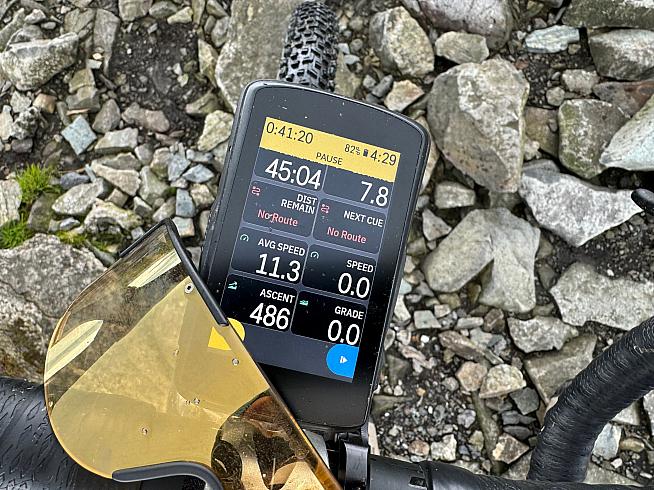
I've been using a Karoo since the first edition was launched in 2017, and the Karoo 2 - launched in 2020 - has been my go-to for the past few years. It's a fantastic piece of kit, with excellent navigation, a large, bright screen and an operating system that offered an experience close to using a smartphone.
The device itself is rock-solid and its mapping and routing features in particular are excellent: I depended on my trusty Karoo to guide the way on several multi-day off-road tours including the Rapha Pennine Rally, the GranGuanche Audax and the Veneto Trail.
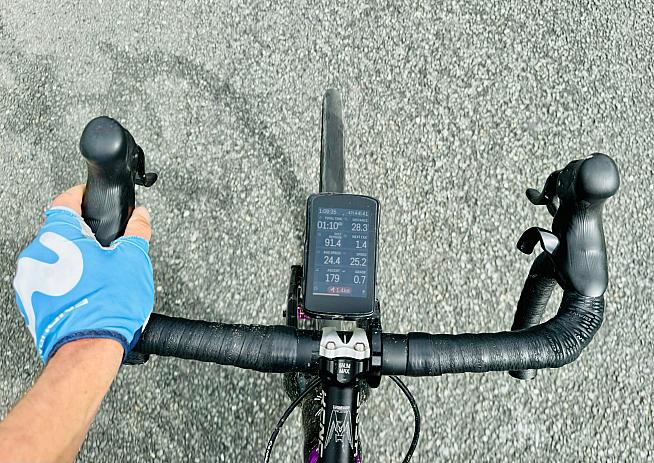
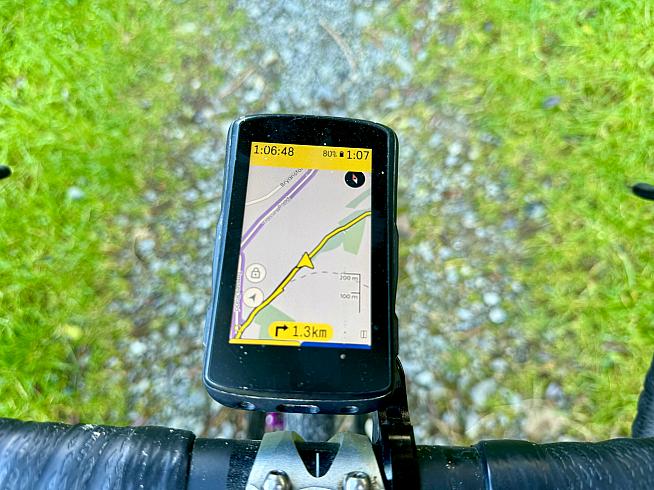
It performed flawlessly, the only minor shortcoming being the battery life.
At around 10 hours, this was acceptable and - as far as I recall - more or less equivalent to rivals from Garmin and Wahoo when the Karoo 2 launched in 2020. It wasn't ideal for bikepacking trips or even longer sportives like the Fred Whitton or Mallorca 312 - but I got around that the same way everyone else did, by carrying a battery pack or running a dynamo hub.
However, technology moves on, and while Karoo are diligent in feeding users regular software updates with new features and improvements the hardware is now four years old.
Four years is a long time in tech - a fact that was brought home to me recently when I borrowed a friend's Garmin Edge 540 for a ride.
I couldn't believe my eyes when, almost two hours into the ride, I scrolled through the display to read "Remaining battery: 26 hours". WHAT?!
When I got home I started looking up the battery life of the latest models of Garmin and Wahoo's cycling computers. Sure enough, they are now packing longevity that would put the Rolling Stones to shame: way beyond anything the models of a few years back could offer.
My beloved Karoo suddenly looked a bit old-hat, especially as I'd noticed it starting to lag a little on start-up. Nothing too major, and in use it continued to be a reliable friend, but my head had been turned.
So the launch of the updated Karoo comes just in time. But is it enough to persuade the Karoo's many devotees to stick with the brand?
Let's take a look at the improvements.
Faster processor, more memory
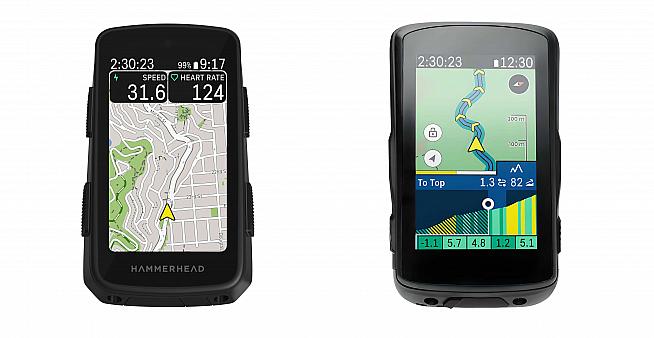
As you'd expect, the internals have been upgraded: the Karoo has a new quad core 2.0GHz processor (up from the previous generation's 1.1GHz) while internal memory has doubled to 64GB and RAM to 4GB.
The new Karoo also adds multi-band GNSS bringing it in line with the current generation of Garmin and Wahoo cycling computers, which should provide a more accurate GPS fix - although this is not something I noticed any problems with in the previous Karoo.
Outfront mount
Hammerhead have launched a new mount for the Karoo, which handily allows you to move the device closer or further from the bars.
I managed to break the previous mount in a low speed crash on ice, in which the unit itself was unscathed. It was a little heavy (yet not especially robust apparently) so I wasn't unhappy to revert to an alloy mount.
The new mount allows for a light or camera to be attached beneath using an adaptor (sold separately) which again is useful.
Hammerhead also include an adapter allowing the Karoo to be fitted to the market-standard Garmin style mounts, so users of integrated mounts will have no problems here.
Boosted battery life
Battery life will be a key consideration for cyclists like myself who enjoy the occasional multi-day tour. Hammerhead claim the new model can run for 15 hours. That's a significant improvement on the 10 hours of the previous model, although still well behind the claimed 26 hours (42hrs in battery saver mode) of the Garmin Edge 840, or up to 17 hours of the Wahoo Roam.
As for the solar edition of the Garmin Edge 1040, that's in a different league entirely with up to 180 hours in less demanding conditions, and 50 hours in typical riding.
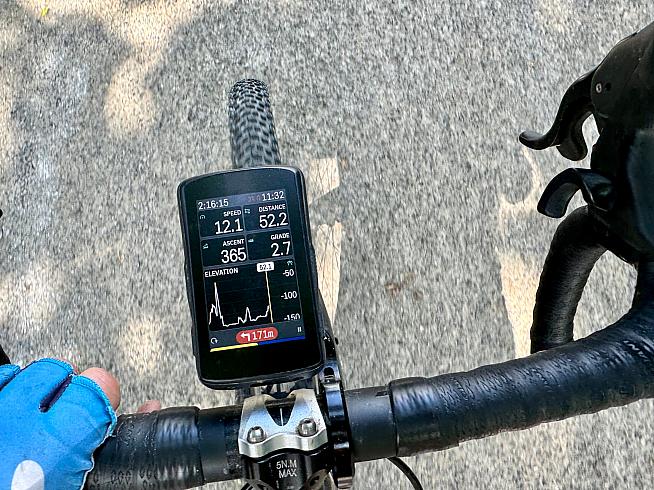
And yet, the overall user experience of the Karoo is so good that personally I will be highly tempted to upgrade. Fifteen hours would be enough for most sportives. On longer rides, like the Frontier 300 which I rode recently, I'll have to resort to the power bank or trusty dynamo but on balance I think it's worth it.
SRAM users will have an even more compelling case. Hammerhead was acquired by SRAM in late 2021 and so it's not surprising to see that the new Karoo is designed to integrate closely with the latest AXS wireless groups.
The situation is less rosy for Shimano Di2 users. The device will still operate just fine as a cycling computer of course, but thanks to an apparent mix-up Shimano have blocked access to Di2's features from displaying on the Karoo (see DC Rainmaker for a more detailed account of what happened).
Companion App
One of the interesting new features is the Karoo companion app. This acts as a bridge between your smartphone and the Karoo - for example, you can now send a pin from Google Maps or Apple Maps to the app, allowing you to navigate to a chosen location.
The app also lets you send a route file to the Karoo from your phone. This was possible already using the Hammerhead Dashboard but the app also lets you send workout files, part of a ramping up of the Karoo's training features - it now displays upcoming intervals when you're in the middle of a workout, and offers integration with popular training platforms including TrainingPeaks and TrainerRoad.
To upgrade, or not?
For its many dedicated fans, I suspect the new Karoo is going to remain a strong contender when it comes to upgrading their cycling computer. It's just a pleasure to use.
Take the other day, when I was trying to show a friend a particularly nice off-road section on a gravel ride. I couldn't recall the exact turn we needed among a maze of back roads, but two clicks on the Karoo brought up my saved routes. I searched for a route that I knew included the desired segment; a quick tap of the touchscreen and the course was laid out on the display, ready to follow from our current position.
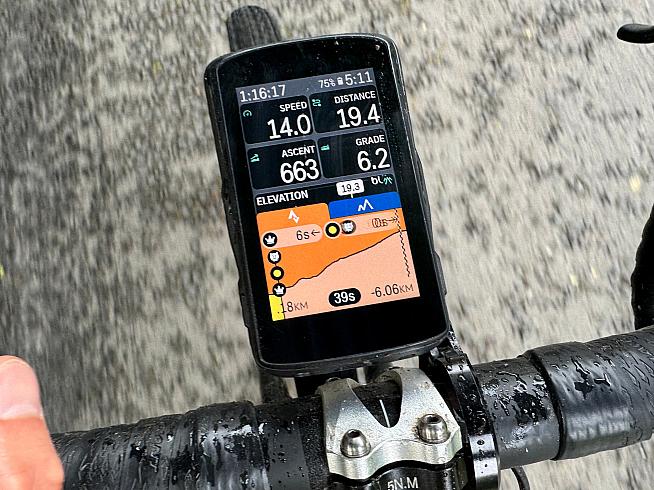
For new customers or neutrals, it may be a closer battle. Wahoo and Garmin each have their devotees. The new Karoo remains marginally heavier than the Edge 840 and offers significantly less battery life... It has a much bigger screen than the ELEMNT Roam, but also costs more.
The feature set among the three is roughly equivalent for most use cases, but the Karoo has a clear edge in terms of screen size and probably a more pleasing user interface.
On price, while the new Karoo has increased to £450 it is in the same ballpark as the Garmin Edge 840 or 1040, either of which you can pick up for around £470, and £100 more than the Wahoo ELEMNT Roam at £350.
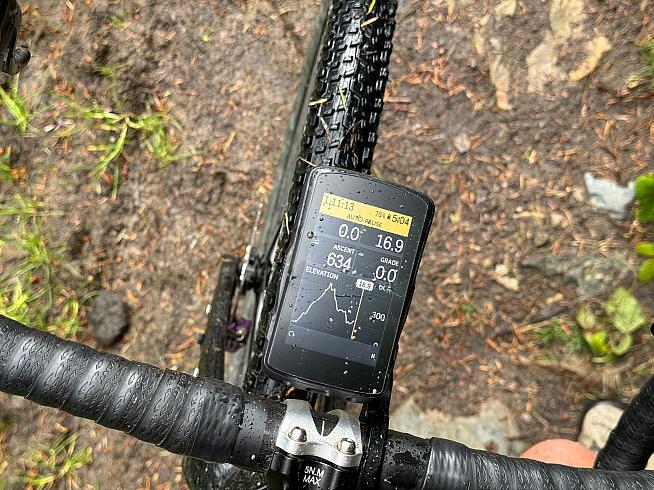
It's a tough call, with each of the three brands now offering highly refined, feature-packed devices. There is no wrong answer: your choice may come down to brand loyalty or your own specific requirements that make one stand out over the other - whether that be the training features, battery longevity, or seamless integration with your wireless SRAM groupset.
Whichever you choose, it sure beats carrying a rain-sodden paper map around a sportive course - an experience many, like myself, will remember none too fondly.
When it comes to tech, cyclists have never had it so good; and the updated Karoo looks set to seal its place in the vanguard of the latest generation of cycling computers.
Hammerhead Karoo 3, £449.99 from www.uk.hammerhead.io
0 Comments





